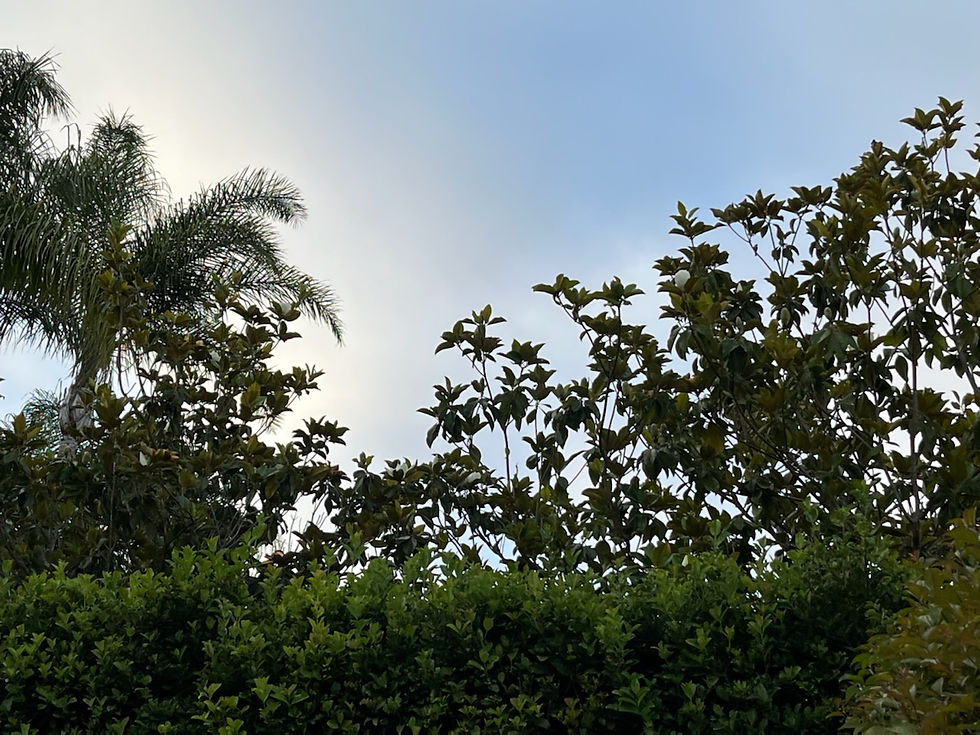GARDEN SURROUNDINGS: Magnolias
- k-england
- Jul 31, 2022
- 3 min read
Updated: Sep 1, 2022
By Francesca Filanc, for Let’s Talk Plants! August
2022.

“A tree or shrub with large, typically creamy-pink, waxy flowers. Magnolias are widely grown as ornamental trees.”
Magnolias
When I first moved to my current property the idea was to put in a swimming pool. Swimming is my exercise of choice, and I knew having a pool would be great for my children, grandchildren and their friends. Due to complications, I got busy designing other projects and instead put a vegetable garden in the area where I originally wanted to build a swimming pool.
During the 2020 shut down, my sister Wendy texted me that I could come swim in her pool. Grateful for her generous offer, I swam in my sister and brother-in-law’s pool almost every day for seven months. During that period Wendy asked, "Whatever happened to the idea of building your own pool Fran?"
That made me think, “gosh, I could put a pool in a different area of my property.”
And, I could put it in an area more suited to a swimming pool than my initial idea several years earlier.
So, I got busy interviewing contractors and hired one that I liked.
The new area where the pool was going to be built had grass, surrounded by trees, shrubs, and plants, and it felt sad that I had to remove several trees to build the pool. Aaron, the contractor with Waterline Pools, the company that I chose, said I would not have to remove the magnolia tree in the corner though, which pleased me greatly.

Next, I hired a tile artist, Kathryn Schmiedeberg, to design a waterfall. I told her I wanted the bas-relief design to be magnolia blossoms to emulate the blossoms in the surrounding garden, especially since I have a “borrowed landscape,” as the Japanese call it, of my neighbor’s beautiful large magnolia trees which are visible from the pool area.
When Kathryn came over for our initial meeting, she brought a beautiful design that she had already drawn up. I was thrilled.
Magnolias are not usually a tree to have right next to a pool. But because it was the only tree I could keep in the area, we made it work. The tree initially went through shock from the building process. I learned that there are large, exposed roots on a magnolia tree that need to stay exposed. So, it is a good idea to plant them in an area where people don’t walk, so they won’t trip over the exposed roots. I keep it pruned back to not cover the pool. The gardeners and I sweep the leaves and blossoms. The rewards outweigh the negatives.
Magnolias are beautiful trees with highly fragrant blossoms. Occasionally the gardener cuts one or two blossoms for me to enjoy the aroma in the house. The blossoms only last a day or two after being cut off from the tree. The trees produce a fruit which is delicious to birds that come in flocks to enjoy the tasty fruit. Hooded orioles especially enjoy them.

“The magnolia tree grows widely in Asia and the eastern United States. The tree's foliage is either deciduous or evergreen. Magnolias are widely grown for their fragrant blossoms that appear in pink, white, green, purple and even yellow. Following blossoming, the tree produces fruit that dangle on thin stems. Fruit appears red, orange or pink. Magnolias offer a wide range of growing choices. Commonly formed into espaliers, grown as shrubs or in tree form, the magnolia can fit into virtually any landscape. The magnolia has a long, diverse history as a coveted ornamental tree.”
Every day while I swim in the pool, I am grateful for the fragrance and beauty of these trees in the landscape.

Happy Gardening!
- Francesca

















